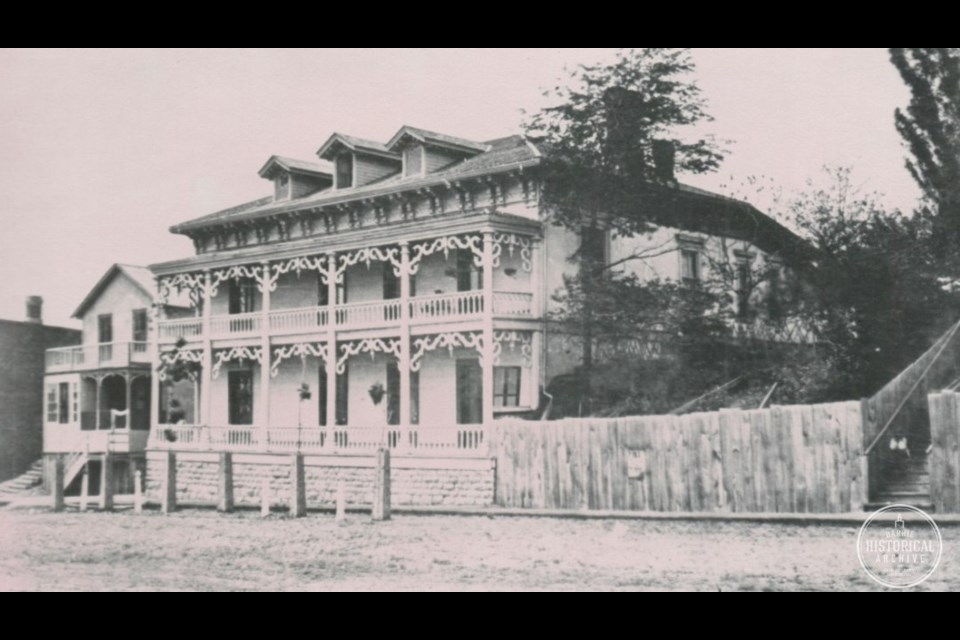Editor's note: To read Part 1, click here.
On Aug. 31, 1921, three hunters stumbled out of the Baxter swamp carrying a very heavy burden. As soon as they could, they notified Coroner Lewis and Undertaker Smith and had them come to their location west of Barrie.
The coroner, when he arrived, was not long in sharing his theory about what had happened to the late Fred Parr.
In his opinion, Parr had tripped in the darkening bush, while carrying his gun, snagged it on a branch, causing him to grasp the barrel, then fall forward and discharge the gun into his own body.
Coroner Lewis then convened a coroner’s jury. In Barrie, the jurors viewed the body and heard expert testimony. In the end, they were satisfied that the death was caused by a bullet which had entered the body from Parr’s right and travelled downward under his collar bone before striking a main artery near his heart.
Only a few minor details remained to be sorted out on the following Friday, Sept. 9.
In the intervening week, everything changed.
On Thursday, the day before the final hearing, the coroner’s jury were brought to the scene of Parr’s death.
The next day, in dramatic fashion, Parr’s bloody shirt and undershirt were brought into a courtroom where an experiment had been set up. The clothing was placed into a heavy safe at the back of the room and a juryman, R.A. Stephens, took the unusual steps of firing twice, with Parr’s own rifle, at the clothing.
The first shot was fired at close range to mimic the accidental shooting that earlier been presumed. This could apply to a suicide, as that possibility had also to be considered. The result was a large hole in the fabric and black powder burns surrounding it.
The second shot was taken from as far away as Stephens could get. This resulted in a small bullet hole, said to be no bigger than the size of an ordinary pencil, and no gunpowder burns were observed.
As the garments of the dead man matched almost exactly the second shot, a terrible realization came upon the observers: Someone else shot Fred Parr.
One by one, the jury cleared the other members of the hunting party. By their sworn statements, and by careful examination their guns, they were each eliminated as the shooter.
Further questioning of the hunting party brought out facts that were not at first thought to be relevant.
Not long before the shot, Mr. Vickers heard a voice shout “Hello!” He wondered for a moment if it was one of his friends but a voice of a higher pitch soon replied with another “Hello!” He decided it was a different party.
After that, Vickers wondered if he should look for his own companions and also began shouting “Hello!” while walking towards a prearranged meeting place. When he heard a groan ahead of him, Vickers called “Hello!” once more and heard a twig snap behind him but could see no one in the darkness. All of this was forgotten after the shock of finding the gravely injured Fred Parr.
The jury then ruled that Fred Parr had come to his death by a bullet fired from a rifle by some person unknown.
It was mentioned that Fred Parr carried a lot of life insurance and had a very good business by which he supported several family members. He had no known enemies and was liked by all.
Some 18 months after Fred Parr’s death, his manager, James Richards, took Parr’s estate to court.
Richards claimed that Parr had made a verbal agreement with him to give him a share in the business and pay him an additional $1,000 a year on top of his regular wages, if he would leave his plumbing business in Lindsay, Ont., and come to Barrie. Papers had been drawn up by a lawyer but never signed by Parr, due to his sudden demise. A settlement later awarded Richards $200.
It is interesting to note that James Richards was not just an employee but Fred Parr’s brother-in-law.
Richards had married Parr’s elder sister, Fanny, in 1907. The couple had moved to Lindsay, near the birthplace of Mr. Richards, and returned to Barrie at Fred Parr’s request in 1920.
The question remains, 102 years after the incident: Who shot Fred Parr?
Each week, the Barrie Historical Archive provides BarrieToday



